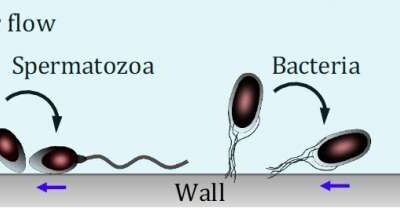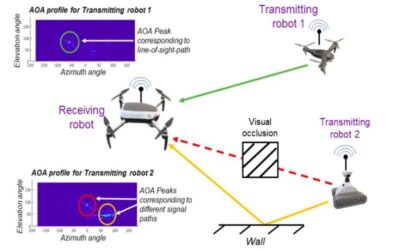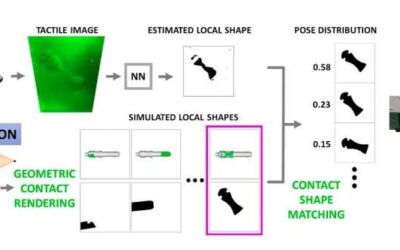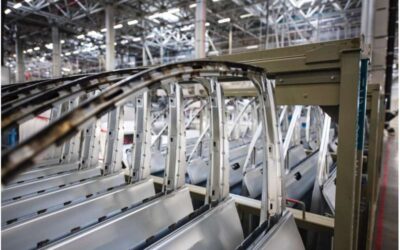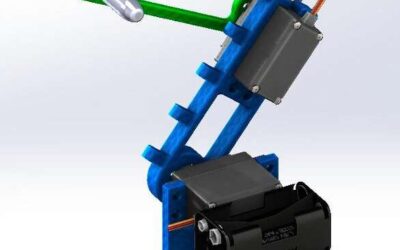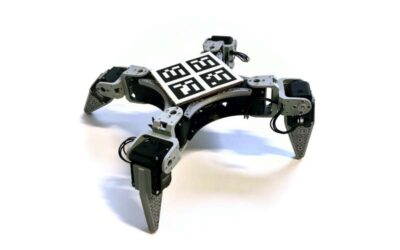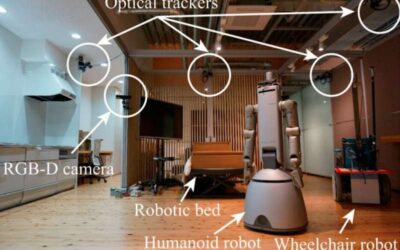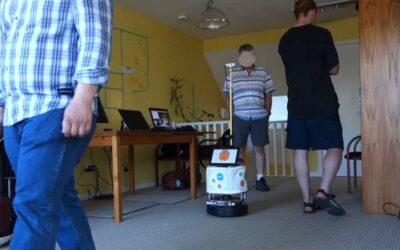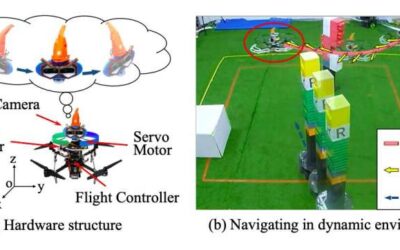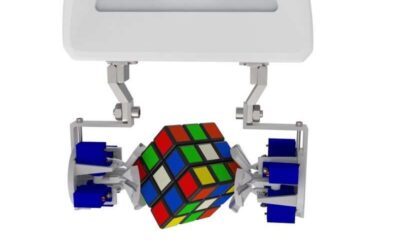Micro-sized robots could bring a new wave of innovation in the medical field by allowing doctors to access specific regions inside the human body without the need for highly invasive procedures. Among other things, these tiny robots could be used to carry drugs, genes...
Robotics
WSR: A new Wi-Fi-based system for collaborative robotics
Researchers at Harvard University have recently devised a system based on Wi-Fi sensing that could enhance the collaboration between robots operating in unmapped environments. This system, presented in a paper pre-published on arXiv, can essentially emulate antenna...
A technique that allows robots to estimate the pose of objects by touching them
Humans are able to find objects in their surroundings and detect some of their properties simply by touching them. While this skill is particularly valuable for blind individuals, it can also help people with no visual impairments to complete simple tasks, such as...
An algorithm for optimizing the cost and efficiency of human-robot collaborative assembly lines
Robots are rapidly making their way into a variety of settings, including industrial and manufacturing facilities. So far, they have shown great potential for speeding up and automating a number of manufacturing processes by substituting or assisting human workers on...
An open-source and low-cost robotic arm for online education
Researchers at Tecnologico de Monterrey in Mexico have recently created a low-cost robotic arm that could enhance online robotics education, allowing teachers to remotely demonstrate theoretical concepts explained during their lessons. This robotic arm, presented in a...
RealAnt: A low-cost quadruped robot that can learn via reinforcement learning
RealAnt: an open-source low-cost quadruped robot for real-world reinforcement learning research. Credit: Ote Robotics Ltd, CC BY 4.0 license. Over the past decade or so, roboticists and computer scientists have tried to use reinforcement learning (RL) approaches to...
Previewed Reality: A system that allows users to predict future changes in their environment
When robots and humans interact in a shared environment, it is important for them to move in ways that prevent collisions or accidents. To reduce the risk of collisions, roboticists have developed numerous of techniques that monitor an environment, predict the future...
A robot that can track specific people and follow them around
Telling humans apart and following them as they move in their surrounding environment could be two highly valuable skills for service robots. In fact, when combined, these two capabilities would allow robots to follow specific people as they are interacting with them...
An obstacle avoidance system for flying robots inspired by owls
When developing robotic systems and computational tools, computer scientists often draw inspiration from animals or other biological systems. Depending on a system's unique characteristics and purpose, in fact, nature typically offers specific examples of how it could...
An origami-inspired robotic fingertip with shape-morphing capabilities
To perform tasks that involve moving or handling objects, robots should swiftly adapt their grasp and manipulation strategies based on the properties of these objects and the environment surrounding them. Most robotic hands developed so far, however, have a fixed and...

